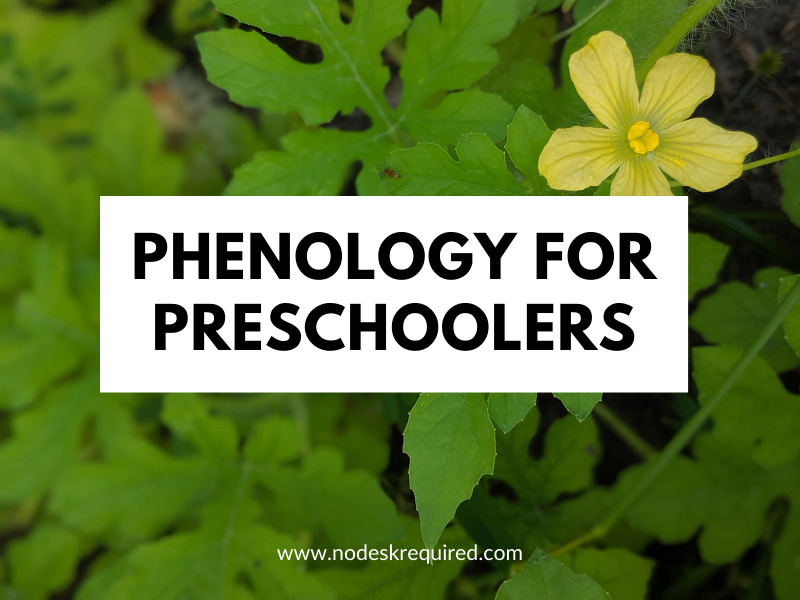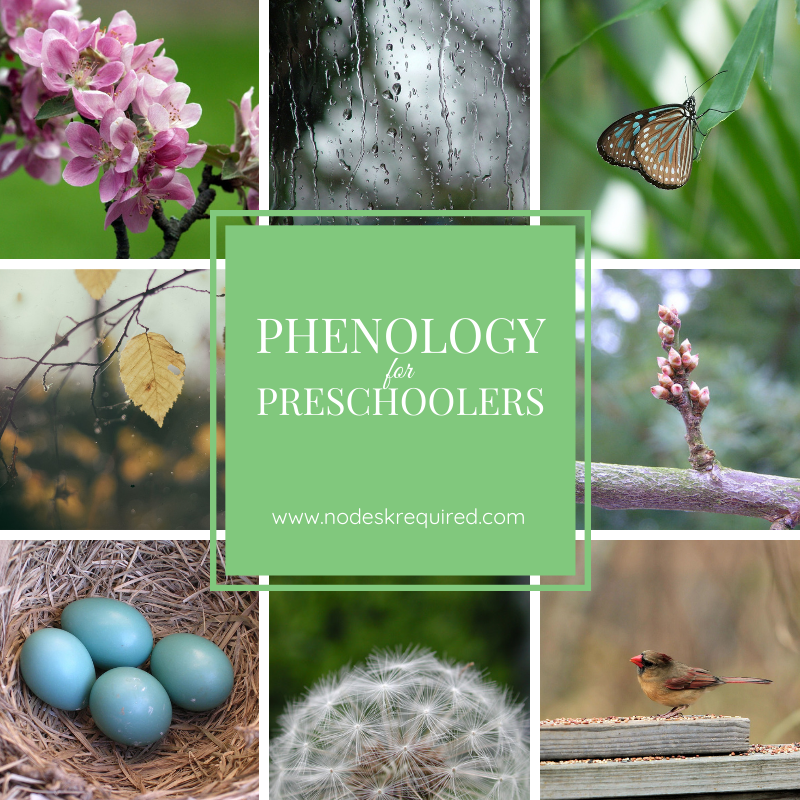Phenology with Preschoolers

If you’ve never heard of phenology, don’t worry – my computer doesn’t recognize it as a real word. But it is real and you and your little ones have probably put it into action without realizing it. Once you’re done reading this post you can check off your boxes for vocabulary and science today. 🙂
What is phenology?
From the Greek words phaino and logos, phenology literally means “the study of appearances.” Basically, it’s the observation and study of nature’s calendar – noticing the first and last “appearances” of various aspects of nature and how they relate to one another – something farmers and gardeners have been doing for centuries. Scientists also use phenology to predict anything from the peak bloom time of cherry trees, to climate changes, to when the pollen count will be at its highest.
“Ordinary” Phenology
While most of us won’t be studying things like how warmer temperatures affect the prevalence of ragweed, we can all make simple observations in our own backyards. Some examples would be noticing the emergence of different insects, when birds begin their migrations (either North or South), the date of the last frost, or when plants start to bud, flower, or fruit.
After tracking these changes for awhile, it’s possible to draw correlations between events. Many of these relationships have been tracked over the years and become known as “folklore or “old wives’ tales” – but they’re all based in the simple science of phenology. Maybe you’re familiar with sayings like these:
- Plant cool-weather vegetables (like lettuce and carrots) when the dandelions appear.
- Silver maples show the lining of their leaves before a storm.
- When the red-winged blackbird appears, spring is on its way.
- Plant peas when the forsythia blooms.
- There will be no frost after the whippoorwill calls.
- Plant corn when the apple blossoms fall.

The Preschool Phenologist
Phenology may sound advanced, but the breakdown is really very simple and preschoolers can use their developing observational skills to study the changing of nature.
- Talk about it! Ask them questions, and tell them about the changes in nature that you’ve observed. Some ideas of things to look for or talk about:
-
- Birds building their nests.
- Plants beginning to bud or bloom.
- Tree frog, cricket, or bird songs.
- First sightings of bees, caterpillars, ants, or butterflies.
- The first thunderstorm.
- Play I Spy Nature. Instead of using the typical colors, say “I spy something new,” “I spy something with wings,” “I spy something building its home,” etc. Use the list above as a springboard.
- Journal together. Take notes daily, as you notice changes, or weekly. Ask your child to tell you what they observed and write it down for them. Let them add their own drawings, or illustrate it with stickers or magazine cut-outs that go with their journaling.
- Use a calendar. Write or illustrate the day’s weather (rainy, hot, snowing, etc.), and add in anything extra that you noticed during the day. Next year you can compare your calendars.
- Go on a scavenger hunt. Print a pre-made nature hunt sheet, or create your own. Have your little one check things off as you find them.
- Study a plant. Choose a particular vegetable to plant at various times during the year. Write down what was happening in nature at each planting time and compare the outcomes of each study plant. See if your most successful planting lined up with phenological observations from other sources.
Phenology isn’t just a spring science, but all the “newness” of spring, paired with the warm weather, tends to make it easier for us to notice changes during this season.
If the topic of phenology intrigues you, I invite you to follow my Phenology board on Pinterest. It’s filled with everything from free printables to information to websites that request observational entries. Come take a peek!
———-
Do you keep a phenology wheel or phenology notebook with your kids?
I’d love to see it and hear your ideas for observing nature’s changes.



Until today I did not know that the term phonology existed. But, you’re right it is something we do without realizing. Can’t wait to try concerted phonology with my three and four-year-old.
Thank you for breaking down this concept with examples on how to incorporate it in our preschoolers day!